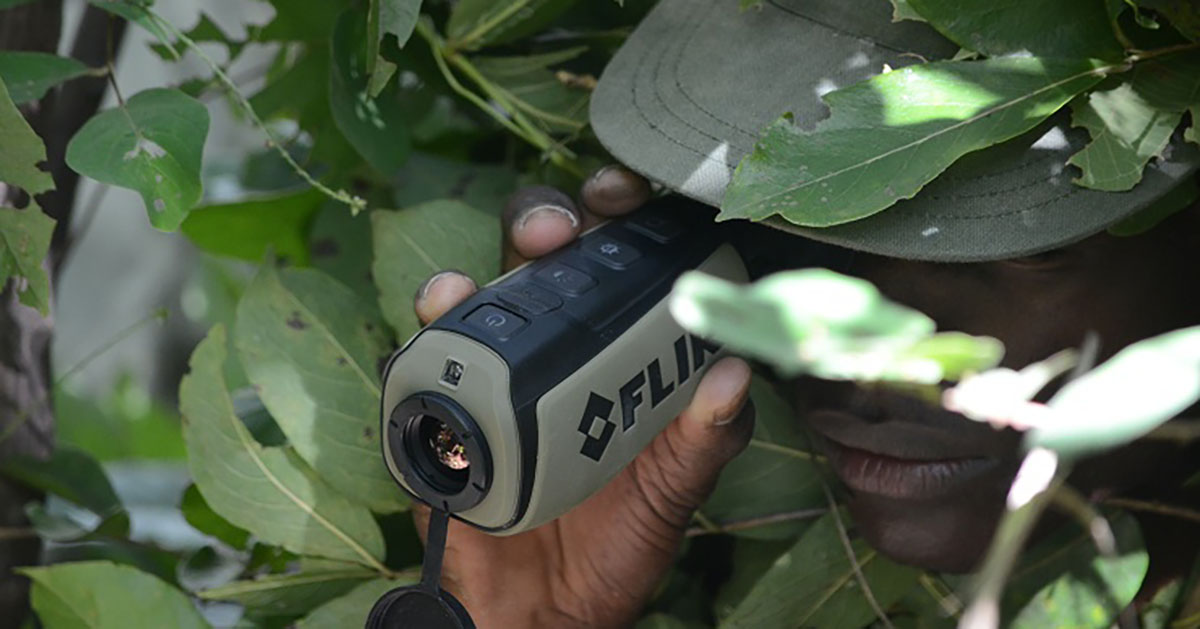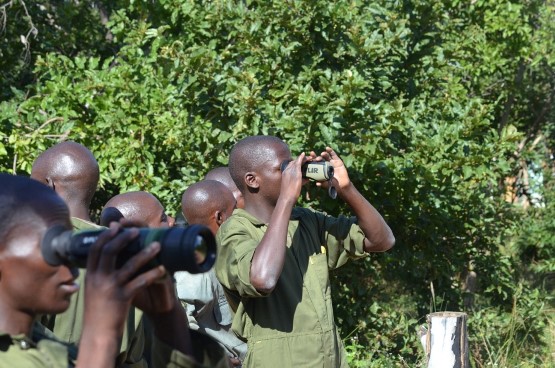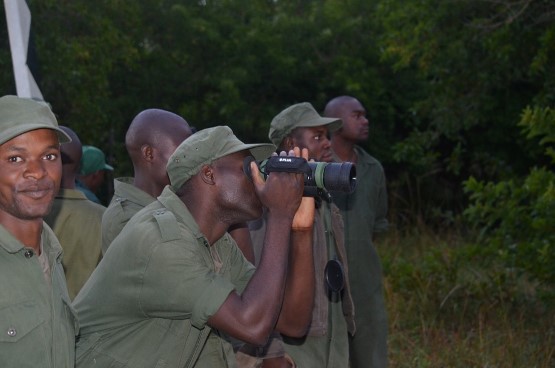FLIR Interviews African Park Ranger on Anti-Poaching Efforts in Recognition of World Ranger Day 2017

Today, we commemorate World Ranger Day and acknowledge the critical work wildlife rangers do to protect the world’s natural treasures. To better understand the role they play each and every day, we interviewed Ole Lancas, Park Ranger at Maasai Mara National Reserve in Africa, who describes his experience with FLIR Scout handheld thermal cameras and how thermal technology is instrumental in the fight against illegal poaching of elephants and rhinos.

Describe the landscape where you are using the FLIR thermal cameras?
The landscape is favorable for the use of the FLIR thermal cameras as they perform well in plain environments and in areas devoid of thick bushes, drifts and hills or mountains.
Before using FLIR Scout thermal cameras, what methods were you using to monitor illegal poaching activities?
Before the FLIR cameras were brought in, the rangers were engaging in a “trial and error” method. That is, the rangers can ambush suspected poacher trails but poachers avoid them most of the times. This method mostly was only reliable for poachers who used spotlights – a rare thing in the current generation of poachers.
How have FLIR Scout thermal cameras changed the way you track/apprehend illegal poachers?
Thanks to FLIR Scout cameras, we can now cover a massive area in the total darkness and detect poachers as far as 3 kilometers away. The FLIR cameras have provided my rangers proper raid management and control, minimized the risk of accidentally approaching wild animals, and drastically increased the ability to detect poachers who attempt to escape.
Has the process in the way you monitor animals at night (or during the day) changed since implementing FLIR technology?
The rangers still conduct the normal daytime patrols to search for signs of poachers, but the FLIR Scout cameras have added a lot of value to night operations. The FLIR’s allow rangers to cover up-to 3 kilometers and really help cover a huge area.

Do you have a favorite story about apprehending a poacher using the technology?
There was one case where a FLIR camera detected poachers over 2 kilometers away. The ranger vehicle was directed to strike so the poachers hid in tall grass. The ranger vehicle was equipped with a FLIR thermal camera, which allowed them to see the poachers thermal signature, even through the thick grass. Thanks to the FLIR, the three poachers were picked out, one after the other. Baffled yet amused by their identification, the detained poachers commented, “Sir, how did you see us? The car was very far from us and we never lit our spotlight, but you still managed to arrest us. If this is how things are, you will arrest all of us.”
How can the general public help in the fight against illegal poaching?
People can help in many ways: pledge to stop wildlife crime, report signs of illegal poaching, financing anti-poaching operations, and assist in the donating of more FLIR cameras to the protectors of nature.
Photo Credit: African Parks Foundation

